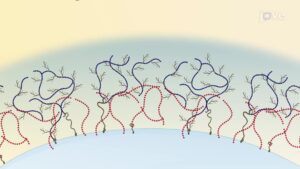What Are GLP-1 Drugs and Why Are They So Popular?
GLP-1 receptor agonists like Ozempic, Wegovy, and Mounjaro were originally developed for managing type 2 diabetes. But their ability to suppress appetite and reduce body weight has made them widely used in fat loss and obesity treatment. While the weight loss benefits are real, there’s a hidden risk: significant muscle loss, especially when these drugs are used without proper exercise or nutrition.
Why GLP-1 Medications Cause Muscle Loss
The main reason these medications can cause muscle loss is simple: extreme appetite suppression. Users often struggle to consume enough calories and protein, especially during rapid weight loss. This caloric deficit, paired with sedentary behavior, leads the body to catabolize muscle tissue along with fat.
“When weight drops fast but strength training and protein intake are ignored, the body burns through muscle as fuel—not just fat.”
The Long-Term Consequences of Losing Muscle
Muscle isn’t just about aesthetics—it’s essential for metabolic health, mobility, and longevity. Losing muscle while shedding fat can cause your metabolism to slow down, making it harder to keep the weight off in the long run. Muscle loss is also linked to increased insulin resistance and frailty with age.
According to a study published by the NIH, maintaining lean mass during weight loss improves long-term outcomes and helps preserve physical function and resting metabolic rate.
Symptoms That You’re Losing Muscle, Not Just Fat
- Fatigue or weakness despite weight loss
- Visible reduction in muscle tone
- Slower recovery from workouts
- Plateaus in fat loss despite continued caloric restriction
- Loss of strength or power during daily activities
How to Protect Muscle While Using GLP-1 Medications
To lose fat and preserve muscle on GLP-1 drugs, you must be proactive with both training and nutrition. Here’s how:
1. Prioritize Resistance Training
Lifting weights is the most effective way to signal your body to retain muscle while losing fat. Focus on compound exercises—squats, deadlifts, push-ups, rows—and aim for at least 2–3 sessions per week. You don’t need to train like a bodybuilder, but you do need to challenge your muscles regularly.
2. Hit Your Daily Protein Goals
High-quality protein is essential to prevent muscle breakdown. Aim for 0.7 to 1 gram of protein per pound of goal body weight. Choose complete protein sources like eggs, poultry, fish, and dairy. For plant-based eaters, use a blend of proteins (such as pea and rice) to ensure adequate amino acid coverage.
3. Track Your Strength Progress
Weight loss doesn’t mean strength loss. In fact, tracking performance in the gym is one of the best indicators of whether you’re maintaining muscle. If your strength drops significantly, it’s a warning sign that you’re not fueling or training effectively enough to support lean tissue.
4. Don’t Cut Calories Too Aggressively
GLP-1s naturally suppress appetite, but the goal shouldn’t be starvation. If you’re only eating 800–1,200 calories a day, even with medication, you risk losing muscle rapidly. Instead, aim for a more moderate deficit—enough to burn fat but not enough to jeopardize muscle preservation.
5. Get Enough Sleep
Sleep impacts hormone levels, muscle recovery, and appetite regulation. Chronic sleep deprivation can elevate cortisol and impair muscle repair. GLP-1 users often experience disrupted sleep patterns due to nutrient imbalances, so prioritizing 7–9 hours of quality sleep is vital.
Reintroducing Exercise on GLP-1: Start Slowly
If you haven’t worked out in a while, it’s common to feel weak or dizzy during your first few sessions on GLP-1 medications. Start with bodyweight exercises or resistance bands before adding weights. Stay hydrated and consider timing workouts a few hours after your largest meal of the day to ensure energy availability.
Why the Scale Isn’t the Full Story
Many users get excited when they see rapid drops in scale weight. But without body composition analysis (such as a DEXA scan or bioimpedance scale), it’s impossible to know if that weight is coming from fat or muscle. Monitoring how your clothes fit, your energy levels, and your strength in the gym tells a far more accurate story than just the number on the scale.
Final Thoughts: Use GLP-1 Smartly
GLP-1 medications can be a powerful tool for fat loss—but only if used in combination with smart lifestyle habits. Don’t fall into the trap of passive weight loss. By lifting weights, eating enough protein, managing stress, and sleeping well, you can retain muscle, increase energy, and achieve sustainable long-term success. Your strength is an asset—protect it.
Video Summary
For more evidence-based nutrition and fitness tips, subscribe to our channel: https://www.youtube.com/@Vitality-and-Wellness
Disclaimer: This content is for educational purposes and does not replace personalized medical advice.



